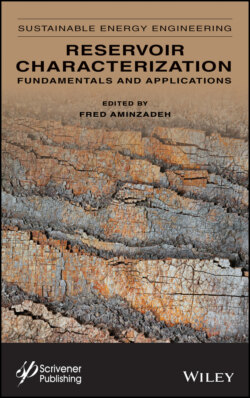Читать книгу Reservoir Characterization - Группа авторов - Страница 16
1.2 Data Requirements for Reservoir Characterization
ОглавлениеWell data provides vertically high-resolution model at the well location, however, the distribution of well in a field are sparse. Combining well information with geophysical and geological data allows the necessary constraints for extrapolating high resolution well data beyond where they are measured thus increasing the coverage. For every phase of the reservoir life cycle from discovery to development to operating to maturity and well stimulation (enhanced oil recovery) phase, geophysical tools are used to create reservoir model with the associated properties and update the model based new data collected.
Integration of geophysical data with geologic data, and engineering measurements improves our understanding of the reservoir, reduces uncertainties and mitigates the risk. The detailed spatial coverage offered are calibrated with analysis of well logs, pressure tests, cores, fracture system, geologic depositional knowledge and other information from appraisal wells. 3D seismic is the primary geophysical technique used to create the original reservoir models. 4D seismic (time lapse data) and other new measurements (micro-seismic, new log/pressure data and production data help create updated (dynamic) reservoir model. In addition, gravity, controlled source EM, borehole measurements such as vertical seismic profiling-VSP, borehole gravimeter-BRGM, cross well seismic, cross well EM are also used to build the original and updated reservoir models.
The required information for the petroleum engineers and geologists includes subsurface lithology, net pay, porosity, permeability, reservoir fluid-fill, fluid contacts, reservoir pressure and stress regime. Geophysical tools infer reservoir properties from the measured physical observations by blending these with measurements made at the wells like well logs, well tests and core analyses. During the field appraisal and development stages, understanding of the reservoir matrix properties and fluid distribution within the reservoir are of great importance.
Figure 1.2 Wide range of physical scale for different data types associated with different geological and reservoir features.
